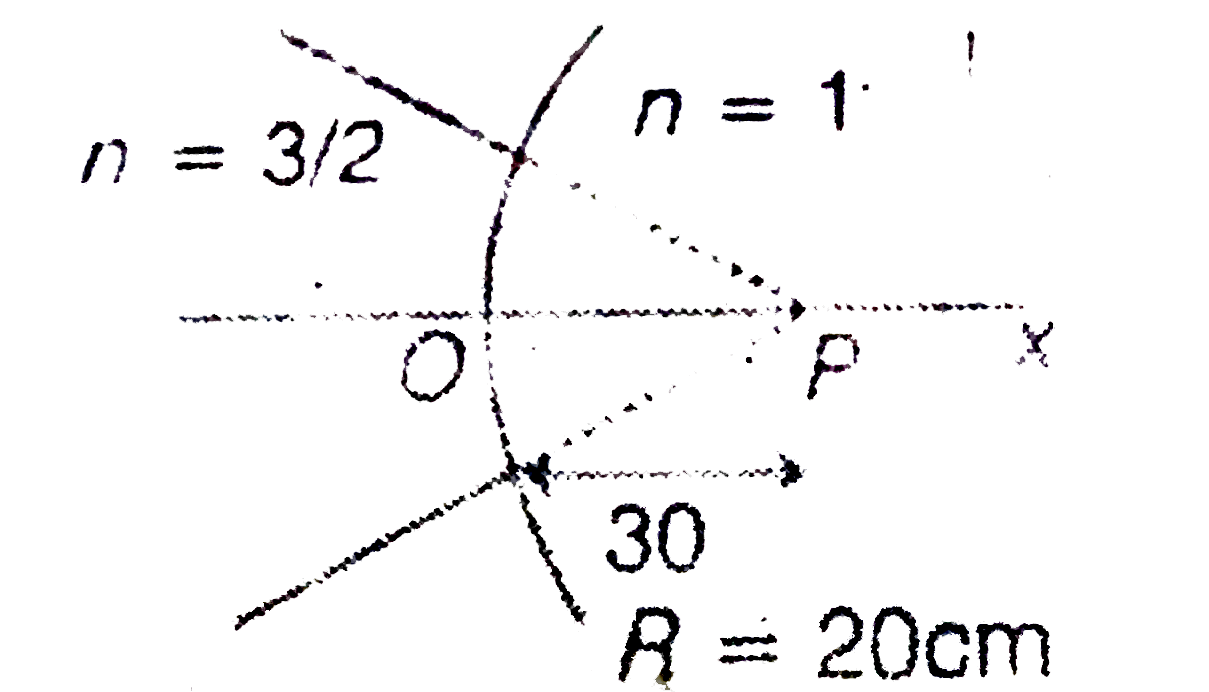Statement I: A beam of white light enters the curved surface of a semicircular piece of glass along the normal. The imcoming beam is moved clockwise (so that the angle increases), such that the beam always enters along th enormal to the curved side. Just before the refracted beam disappears, it becomes predominantly red.
Statement II: The index of refraction for light at the red end of the visible spectrum is more than at the violet end.

Statement is True, Statement II is True, Statement II is correct explanation for Statement I
Statement I is True, Statement II is True, Statement II is NOT a correct explanation for Statement I.
Statement I is True, Statement II is False.
Statement I is False, Statement II is True.
The correct Answer is:c.
The index of refraction of light at the red end of the visible spectrum is lesser than at the violet end. Statement II is false
Topper's Solved these Questions
- GEOMETRICAL OPTICSBook:CENGAGE PHYSICSChapter:GEOMETRICAL OPTICSExercise:Assertion-Reasoninig
Explore 2 Videos
- GEOMETRICAL OPTICSBook:CENGAGE PHYSICSChapter:GEOMETRICAL OPTICSExercise:Linked Comprehension
Explore 51 Videos
- GEOMETRICAL OPTICSBook:CENGAGE PHYSICSChapter:GEOMETRICAL OPTICSExercise:Subjective
Explore 26 Videos
- FRICTIONBook:CENGAGE PHYSICSChapter:FRICTIONExercise:QUESTION BANK
Explore 1 Video
- GRAVITATIONBook:CENGAGE PHYSICSChapter:GRAVITATIONExercise:Question Bank
Explore 39 Videos
Similar Questions
Show that when a light beam is incident on a refractive surface at the polarising angle, the reflected and refracted beams are mutually perpendicular to each other.
View SolutionLight in vacuum is incident on the surface of a glass slab. In the vacuum the beam makes an angle of a glass slab. In the vacuum the beams makes an angle of 37∘ with the normal to the surface, while in the glass it makes an angle of 23.5∘ with the normal. What is the index of refraction of the glass ?
View Solution
Knowledge Check
A beam of white light is incident on a hollow prism of glass. Then
 Athe light emerging from prism gives spectrum but the bending of all colours is always from baseBthe light emerging from prism gives spectrum, all the colours bend towards the base, the violet must and red and leastCthe light emerging from prism gives spectrum, all the colours bend towards base, the red the least and violet the mostDthe light emerging from prism gives no spectrum
Athe light emerging from prism gives spectrum but the bending of all colours is always from baseBthe light emerging from prism gives spectrum, all the colours bend towards the base, the violet must and red and leastCthe light emerging from prism gives spectrum, all the colours bend towards base, the red the least and violet the mostDthe light emerging from prism gives no spectrumA beam of white light is shone onto a glass prism. The light cannot be :
ADeviatedBDispersedCFocusedDRefractedThe image for the converging beam after refraction through the curved surface is formed at
 A40 cmB403 cmC20 cmD1807cm
A40 cmB403 cmC20 cmD1807cm
The wavelength of a beam of light in air is 5000Å. Find the number of waves of the beam in 10 cm of glass of refractive index 1.5 k
View SolutionWhen a beam of white light passes through a glass prism,
the colour of light beam that deviates the least is
View SolutionA parallel beam of light emerges from the opposite surface of the sphere when a point source of light lies at the surface of the sphere. The refractive index of the sphere is
View SolutionA parallel beam of light emerges from the opposite surface of the sphere when a point source of light lies at the surface of the sphere. The refractive index of the sphere is
View SolutionWhen a parallel beam of monochormatic light suffers refraction while going from a rarer medium into a denser medium, which of the following are correct ?
a) the width of the beam decreases
b) the width of the beam increases
c) the refracted beam makes more angle with the interface
d) the refracted beam makes less angle with the interface
View Solution